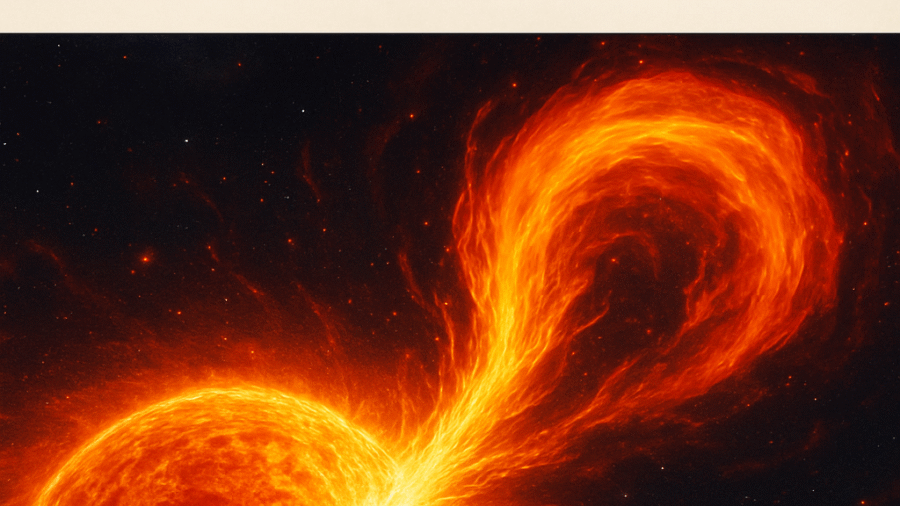New research reveals that solar flares may reach temperatures over 60 million Kelvin—far hotter than scientists previously believed. Learn how this discovery reshapes our understanding of the Sun, space weather, and its impact on Earth.
1. What’s New?
Recent calculations suggest that ions in solar flares might reach temperatures up to 60 million Kelvin (≈ 60 million °C or 108 million °F)—far hotter than previously assumed. Meanwhile, electron temperatures—commonly used for flare estimates—aren’t nearly as high .
2. Why Does This Matter?
Traditionally, scientists assumed electrons and ions in solar flares reached the same temperature. However, new models show that ions can be significantly hotter than electrons—by as much as 6.5 times This disparity can persist for tens of minutes in key flare regions
3. Temperature Estimates – Just How Hot?
-
Ion temperatures: Up to 60 million Kelvin, or well over 100 million °F .
-
Relative scale: Up to 6.5 times hotter than electron-based estimate
-
In Fahrenheit: Could surpass 180 million °F .
4. What’s Behind the Heat?
The culprit is magnetic reconnection—a process where tangled solar magnetic field lines snap and reform, releasing massive energy. New findings show this can preferentially heat ions much more than electrons during flare
5. Why It Solves a Long-Standing Mystery
Since the 1970s, solar physicists have wondered why spectral lines in flare observations are broader than expected. These “non-thermal” broadenings can now be explained by super-hot ion temperatures, helping resolve a decades-old puzzle .
6. Why It Matters for Space Weather
Understanding these hotter ion temperatures is vital for:
-
Improving models of solar flare behavior and spectrum.
-
Enhancing space weather forecasting.
-
Designing spacecraft and satellites that can better withstand intense flare radiation.
-
Protecting astronauts in low-Earth orbit .

Summary Table
| Parameter | Previous Assumption | New Insight |
|---|---|---|
| Electron Temperature | Basis for flare estimates | Remains relatively lower |
| Ion Temperature | Assumed equal to electrons | Up to ~6.5× hotter (~60 million K) |
| Mechanism | Shared heating via electrons | Magnetic reconnection favoring ions |
| Implications | Unexplained spectral line width | Broader lines now attributable to hot ions |
| Space Weather Impact | Based on electron heating | Revised models improve predictions |
Final Thoughts
This emerging research marks a paradigm shift in solar physics—highlighting how ions, not just electrons, play a critical role in the extreme physics of solar flares. It’s a compelling reminder that even our nearest star can still surprise us.
Let me know if you’d like to dive deeper into the math behind the models, observations from solar telescopes, or how this may influence future space missions!
Related posts:
- Ukraine–Russia Conflict Update August 2025: Frontlines, Water Crisis & Diplomacy
- Ukraine–Russia War Update August 2025 | Global Impact on USA, Canada, UK, Australia, Brazil, Europe, UAE
- CPA Affiliate Marketing Guide 2025 | Make Money Online Worldwide
- When Could a U.S. Government Shutdown Occur? Deadline Approaching



Add a Comment